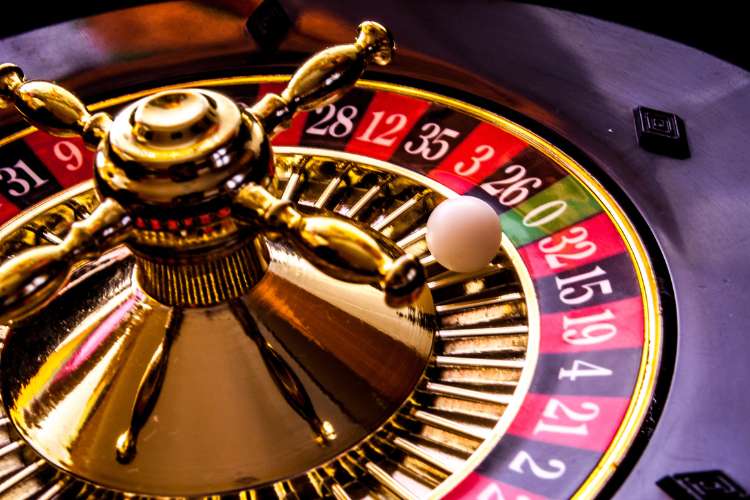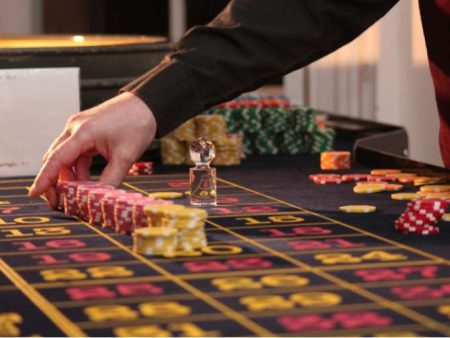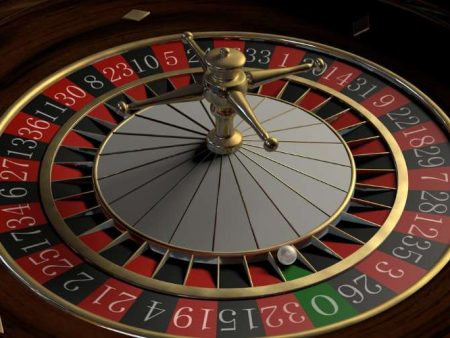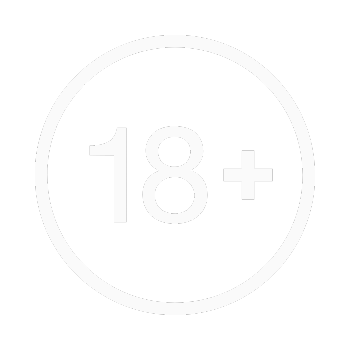
What's on this page
Roulette is one of the most thrilling and iconic casino games, and European Roulette stands as a favorite for many players, particularly in the UK. With its distinctive wheel and high-energy gameplay, it offers players a chance to win big while enjoying a rich and exciting experience. If you’re new to the game or want to enhance your skills, this guide will walk you through everything you need to know about European Roulette: the rules, betting options, and some strategic tips to get you started. Plus, we’ll take a look at the differences between European Roulette and other versions like American Roulette.
What is European Roulette?
At its core, European Roulette is a casino game where players place bets on a wheel divided into numbered pockets. The numbers on the wheel range from 1 to 36, plus a single zero. The aim of the game is to predict where the ball will land after the dealer spins the wheel.
The appeal of European Roulette is that it offers better odds than its counterpart, American Roulette, which has an additional double zero pocket on the wheel. This means that with European Roulette, players enjoy a house edge of just 2.7%—lower than the 5.26% found in American Roulette due to the absence of the double zero. If you’re someone who likes better odds and a more straightforward game, European Roulette is the perfect choice for you.
Understanding the European Roulette Wheel
The European Roulette wheel is divided into 37 pockets. These include the numbers 1 through 36, alternating between red and black, and a single green pocket for the zero. The layout of the numbers is designed to be unpredictable, so no two spins are ever exactly alike.
Wheel Layout:
- Numbers 1-36 are split evenly between red and black.
- The single zero is the only green pocket, and it gives the game its distinctive edge over the American Roulette version, which has both a zero and a double zero.
The ball is spun in the opposite direction to the wheel, and the goal is to predict where it will land. This randomness is what makes European Roulette such an exciting game to play.
Types of Bets in European Roulette
One of the things that make European Roulette so engaging is the wide variety of bets you can make. Whether you prefer low-risk bets with higher odds or are feeling lucky and ready to take a chance on a big payout, there’s something for every type of player.
Inside Bets:
Inside bets are placed on specific numbers or small groups of numbers. These bets offer higher payouts but come with a lower chance of winning.
- Straight Up: Bet on a single number. Pays 35:1.
- Split: Bet on two adjacent numbers. Pays 17:1.
- Street: Bet on three consecutive numbers in a row. Pays 11:1.
- Corner: Bet on four numbers that form a square. Pays 8:1.
- Line: Bet on two rows of three numbers each. Pays 5:1.
Outside Bets:
Outside bets are less risky and cover larger groups of numbers, which means lower payouts, but they offer higher chances of winning.
- Red/Black: Bet on the color of the number. Pays 1:1.
- Odd/Even: Bet on whether the number will be odd or even. Pays 1:1.
- High/Low: Bet on whether the number will be low (1-18) or high (19-36). Pays 1:1.
- Dozens: Bet on one of three groups of 12 numbers. Pays 2:1.
- Columns: Bet on one of the three vertical columns of 12 numbers. Pays 2:1.
Each of these bets has its own set of odds, and choosing the right mix can help you develop a strategy that works for you.
How to Play European Roulette
Playing European Roulette is straightforward, even for beginners. Here’s a step-by-step breakdown of what you can expect:
- Place Your Bet: Choose your chips and place them on the appropriate spots on the table. You can place inside or outside bets, or both.
- Spin the Wheel: Once all bets are placed, the dealer spins the wheel in one direction and releases the ball in the opposite direction.
- Wait for the Ball to Land: The ball will eventually land in one of the numbered pockets. If you predicted correctly, you win your bet according to the payout odds.
- Payouts: If you win, the dealer will pay out your winnings according to the type of bet you placed. If you lose, your bet is forfeited.
Remember, you can play for fun or with real money. For beginners, I recommend practicing first at online casinos or using play-money versions of the game to get familiar with the rules.
Payouts and Odds in European Roulette
Here’s a handy breakdown of the payouts for various bet types in European Roulette:
| Bet Type | Payout | Odds of Winning |
| Straight Up | 35:1 | 2.7% |
| Split | 17:1 | 5.4% |
| Street | 11:1 | 8.1% |
| Corner | 8:1 | 10.8% |
| Line | 5:1 | 16.2% |
| Red/Black | 1:1 | 48.6% |
| Odd/Even | 1:1 | 48.6% |
| High/Low | 1:1 | 48.6% |
| Dozens | 2:1 | 32.4% |
| Columns | 2:1 | 32.4% |
The house edge in European Roulette is 2.7%, which is lower than that of American Roulette due to the lack of a double zero. The lower the house edge, the better the odds for the player.
European Roulette Strategies
If you’re keen to improve your game, there are several European roulette strategies that can help you play smarter. While no strategy can guarantee a win due to the randomness of the game, these strategies aim to manage your bets and increase your chances over time.
The Martingale Strategy
This is one of the most popular betting systems in roulette. The idea is simple: double your bet after every loss until you win. Once you win, return to your original bet. While this can be a lucrative strategy in the short term, you should always be mindful of your bankroll and avoid chasing losses.
The Reverse Martingale Strategy
This is the opposite of the Martingale. Instead of increasing your bet after a loss, you double your bet after a win. This strategy capitalizes on winning streaks but requires discipline to avoid losses when the streak ends.
The D’Alembert Strategy
In this system, you increase your bet by one unit after a loss and decrease it by one unit after a win. The D’Alembert is a safer, more gradual approach compared to the Martingale, making it ideal for cautious players.
The Fibonacci Strategy
The Fibonacci strategy uses a number sequence (1, 1, 2, 3, 5, 8, 13, etc.), where each number is the sum of the two preceding ones. After a loss, you move to the next number in the sequence. This strategy requires a bit more patience, but it can be an effective way to manage your bets.
Each of these strategies can help you approach European Roulette with a more structured mindset, but always keep in mind that no system can overcome the house edge in the long run.
Online vs. Land-Based European Roulette
Whether you’re playing European Roulette at a brick-and-mortar casino or online, both options have their advantages.
Land-Based Roulette:
- Offers the excitement of a social experience and the chance to interact with other players and the dealer.
- There’s a tactile element to spinning the wheel and watching the ball roll.
- Payouts are typically paid out in chips or cash.
Online Roulette:
- You can play from the comfort of your own home, 24/7.
- Many online casinos offer live dealer games, where a real dealer spins the wheel and interacts with players.
- Convenient for practicing without the pressure of a live crowd.
Both options are great, depending on your preferences. Online roulette offers convenience and flexibility, while land-based casinos bring a social atmosphere and excitement.
Responsible Gambling: Playing European Roulette Safely
It’s essential to approach European Roulette with a responsible mindset. Gambling should always be for entertainment, not a way to make money. Here are some tips for playing responsibly:
- Set a Budget: Before you start playing, decide how much money you’re comfortable spending and stick to it.
- Know When to Quit: If you’re on a losing streak, don’t try to win it back. Take a break and come back another time.
- Avoid Chasing Losses: Don’t increase your bets in an attempt to recover losses. Stay within your budget.
- Use Casino Tools: Many online casinos offer self-exclusion tools and setting deposit limits to help manage your spending.
By setting limits and knowing when to stop, you can enjoy European Roulette as a fun and exciting game while minimizing the risk of problem gambling.
Conclusion
Now that you’ve learned the basics of European Roulette, the types of bets, and some useful strategies, you’re ready to jump into the game. Whether you choose to play at an online casino or head to a land-based venue, European Roulette offers an exciting and dynamic gaming experience. Remember, while luck plays a significant role, understanding the rules and applying a bit of strategy can help you make smarter bets. So, what are you waiting for? Spin the wheel, have fun, and always play responsibly. Best of luck!





